Get PeakVisor App
Sign In
Search by GPS coordinates
- Latitude
- ° ' ''
- Longitude
- ° ' ''
- Units of Length

Yes
Cancel
Share ×

Scan the QR code and open PeakVisor on your phone
❤ Wishlist ×
Choose
Delete
Beautiful forests and landscapes will take your breath away in this area of Tenerife. The deeper you go into the green thickness, the more astounding the sights are with all the lavish vegetation on the write and awesome blue sea on the left. When you go mountain biking or hiking here, you can touch all of this wonder with your own hands if you enter the spectacular forest area that surrounds the majestic Teide National Park.
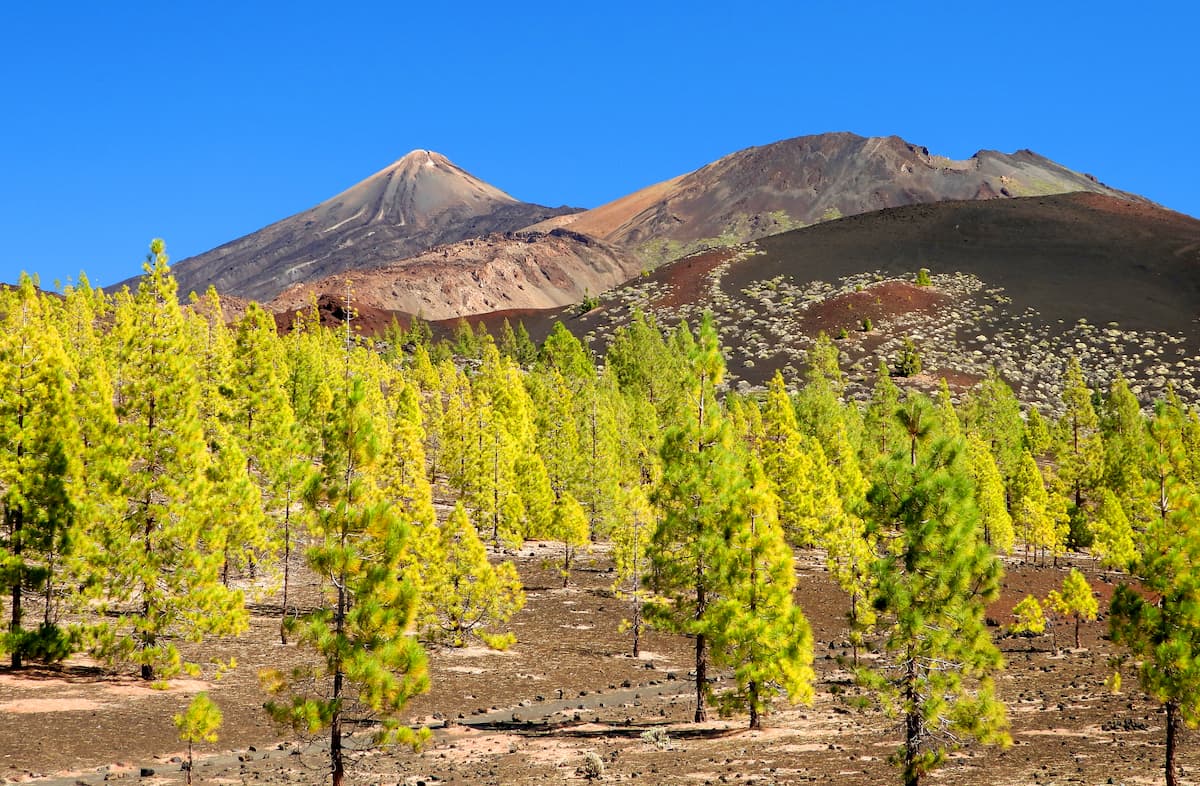
With the total area of 46,613 hectares, Corona Forestal Natural Park is the largest protected natural area in the entire Canary Islands. It’s made up of a large area of Canarian pine forest and high mountain vegetation which surrounds the Teide National Park and which constitutes the authentic lung of Tenerife. In this space, you can find the headwaters of a good part of the rivers flowing in the ravines that make up the island's drainage network, which is why it plays a very important role in ensuring the balanced water collection and conserving soils against erosion, in fact, one of the most important operations in this Natural Park is the extraction of water. Some 200 galleries, of little more than a thousand that exist in Tenerife, are located inside the Corona Forestal.
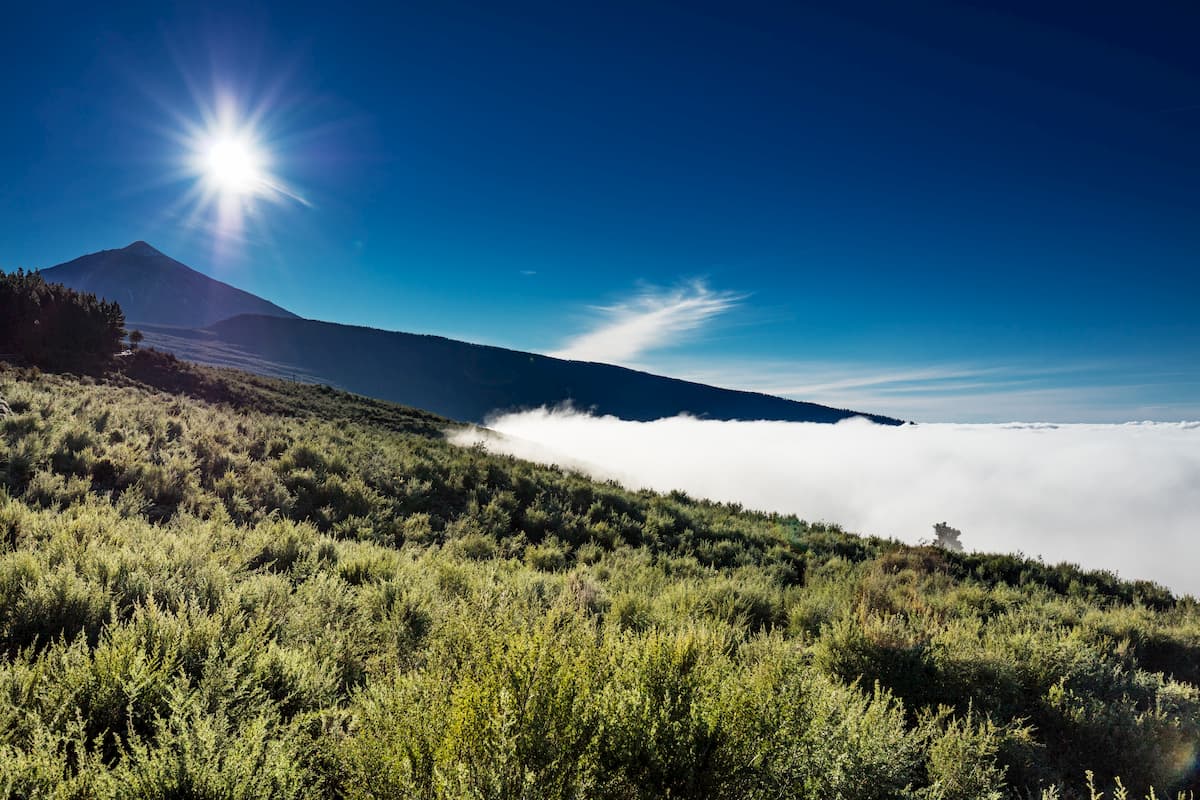
This area has three large volcanic ridges or mountain ranges that converge towards the centre of the island. These mountains were formed during the second eruptive cycle of Tenerife as a result of intense volcanic activity. The steep slopes of these three ridges descend towards the sea. They are crossed by attractive ravines or morphological phenomena of singular beauty such as the Moonscape or the colossal depressions of Güímar and La Orotava.
The main characteristic defining the park is the largest forest mass in the Canary Islands, in which pine forests, both natural and repopulated, predominate. The Canary Island pine, the most representative species of this pine forest, has the property of being fire resistant. This resilience has helped to preserve the forests and ensure the peaks of this part of the island have not become eroded rock deserts because of frequent forest fires.
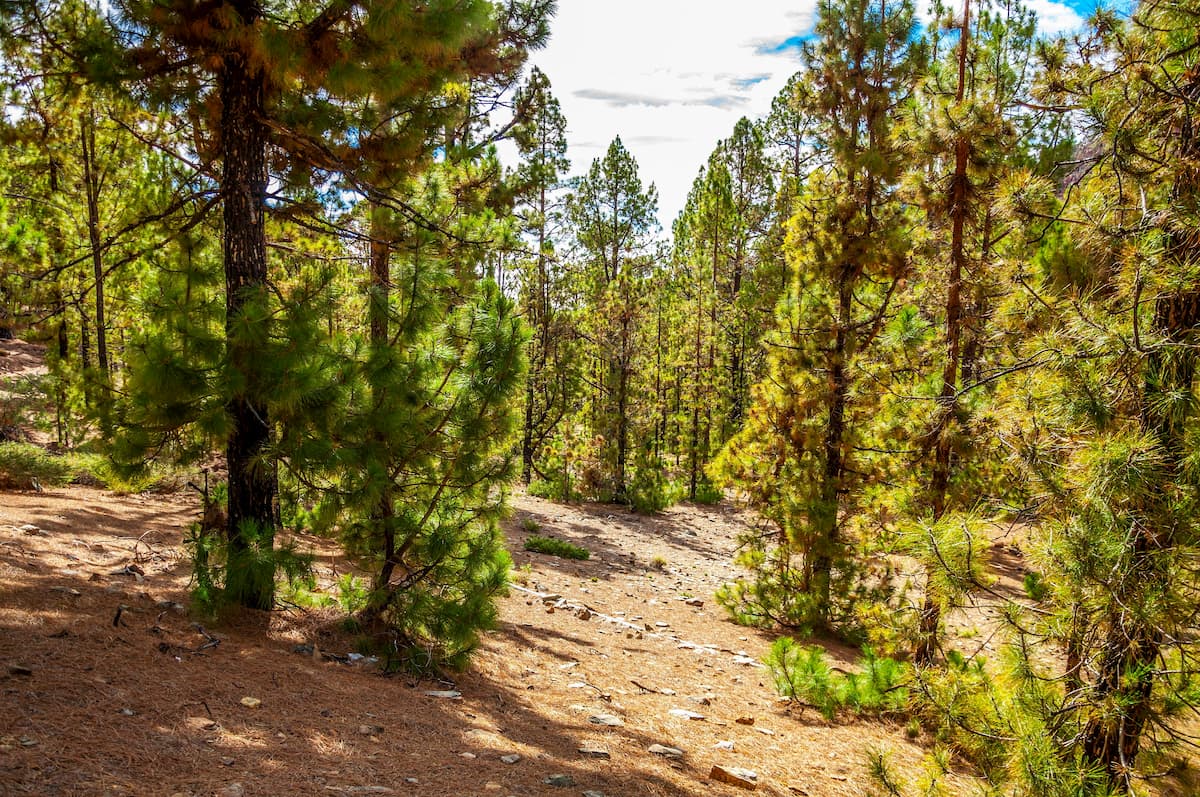
Along with the Canary pine, there are some distinguished pine communities that are currently being replaced by typical laurel forest species in order to recover the forest formation that originally reigned in these spaces. There are also samples of high mountain shrub and fayal-brezal in certain enclaves.
The trails that run through the park go from the lowest heights to the peaks, taking advantage of hills and valleys and connecting neighbouring regions, thus drawing a grid in which the old paths have been replaced by modern forest tracks.
There are also a series of recreational areas, camps and camping sites, as well as two nature classrooms that offer multiple services to their visitors.
Do not let any detail escape you, delight yourself with the landscape that makes its way before you from the many viewpoints that you find. If you like geology, do not miss the opportunity to appreciate the recent ravines, pythons or lavas that are living samples of the island's volcanic essence. Listen to the ruminations of the perpetual water in the ravines or stroll through the inhabited enclaves of Las Dehesas and Los Pelados where you can mix with the farmers who preserve ancient traditions with their tool rooms and their traditional wineries.

The locals spend their free time wrapped in the hubbub of their songs, in leisurely conversation and, of course, eating and tasting that local wine that they keep in cellars built with their own hands. You cannot miss the Moonscape in the heights of Vilaflor that will make you feel like Neil Armstrong on his famous mission aboard Apollo XI or walk through the impressive area of Cuevas Negras, north of Pico Viejo, a place where you can see volcanic components such as cordate lavas, volcanic bombs of curious shapes, arches and volcanic tunnels. Lunatic, virgin, primal, desolate, mineral and sinister are appropriate qualifiers to describe this environment.
It’s worth seeing one of the Canarian pine trunks and discovering its hard bark that makes this tree immune to fire. What you breathe within that enormous forest mass is the aroma of the fayal-brezal. Here is one of the last remaining redoubts in the world of Laurisilva, this sacred place is located in the Teguigue ravine, in the valley close to Güímar.
Once you strike 2,000 meters a.s.l., you will see a high mountain shrub similar to that of the Las Canadas del Teide National Park. Also, it is common to come across chestnut trees, eucalyptuses or cypresses at various points. The entire natural area, especially the southern and northern slopes, has threatened and protected species thriving here in abundance.
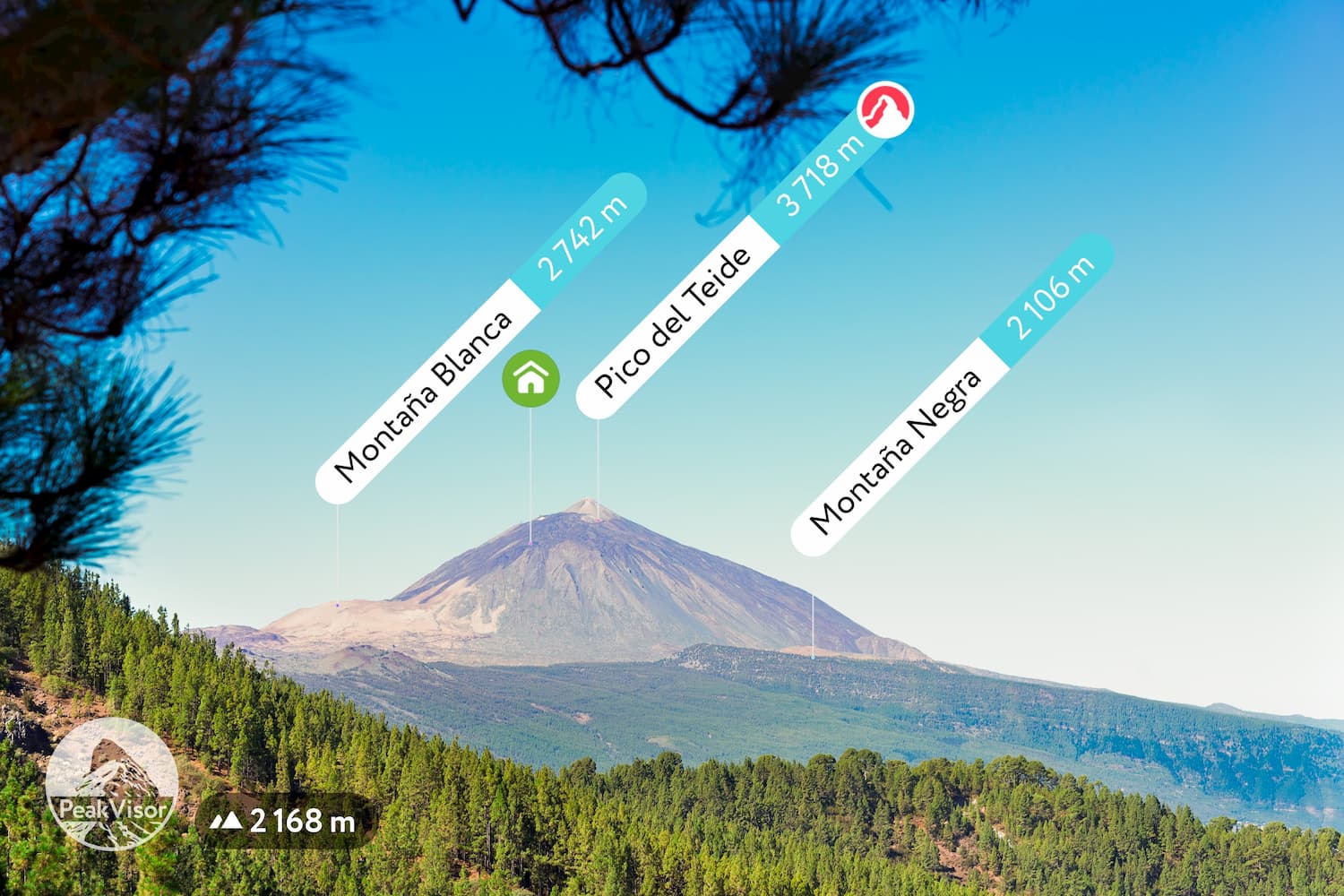
The fauna and flora have a magnificent refuge in this place. There is a very high endemic biodiversity which includes several threatened species and many of those protected by national legislation and by international conventions. Among the fauna that inhabits the park, you can find 37 bird species that nest here to which other migratory and occasional visitors are added. You will be able to contemplate some of the unique birds of the archipelago in this area: the pinzón del Teide, the great spotted woodpecker, and the most significant species, the two endemic pigeons, rabiche and turqué, as well as a large number of invertebrate species with a high percentage of endemicity.
You will be dazzled by the sparrowhawk and the kestrel, two of the largest birds, and three of the four native species of reptiles (the smooth, the perennial and the blight lizard) found in the Park.
The most interesting mammals are bats - several of them are endemic - that live in caves and volcanic tubes in the area. There are also species introduced from abroad such as the rabbit and the mouflon of Corsica. The first shows itself frequently, while the second is much shier and more timid.

If you still doubt that nature is the best artist, you have to visit this landscape of whimsical shapes hidden on the highest slopes of the mountains in the south of the island of Tenerife. This Moonscape is made up of numerous stylized-looking conical figures which together resemble a modernist cathedral. For thousands of years, erosion has chiselled them on a slope of zillion of sloping layers of fine beige volcanic ash. The result is an amazing spectacle that seems taken from another planet, hence its name.
It is located in Vilaflor, on a hillside surrounded by pine trees and within the limits of the Corona Forestal Natural Park. A curious fact mountaineers Francisco Castro and Vicente Jordán Hernández wrote about in their respective books (Senderos, volcanes y montañas y Tenerife a pie) was that its location had been hidden for a long time. Both found references to the existence of this enigmatic place in an old photograph. Francisco Castro says that it appeared as a filler in a "brochure published in 1961 on the ideal way to climb Teide”, but they did not know the exact location. After several explorations, the prestigious geologist Telesforo Bravo and the photographer Imeldo Bello Baeza rediscovered Moonscape in the spring of 1966.
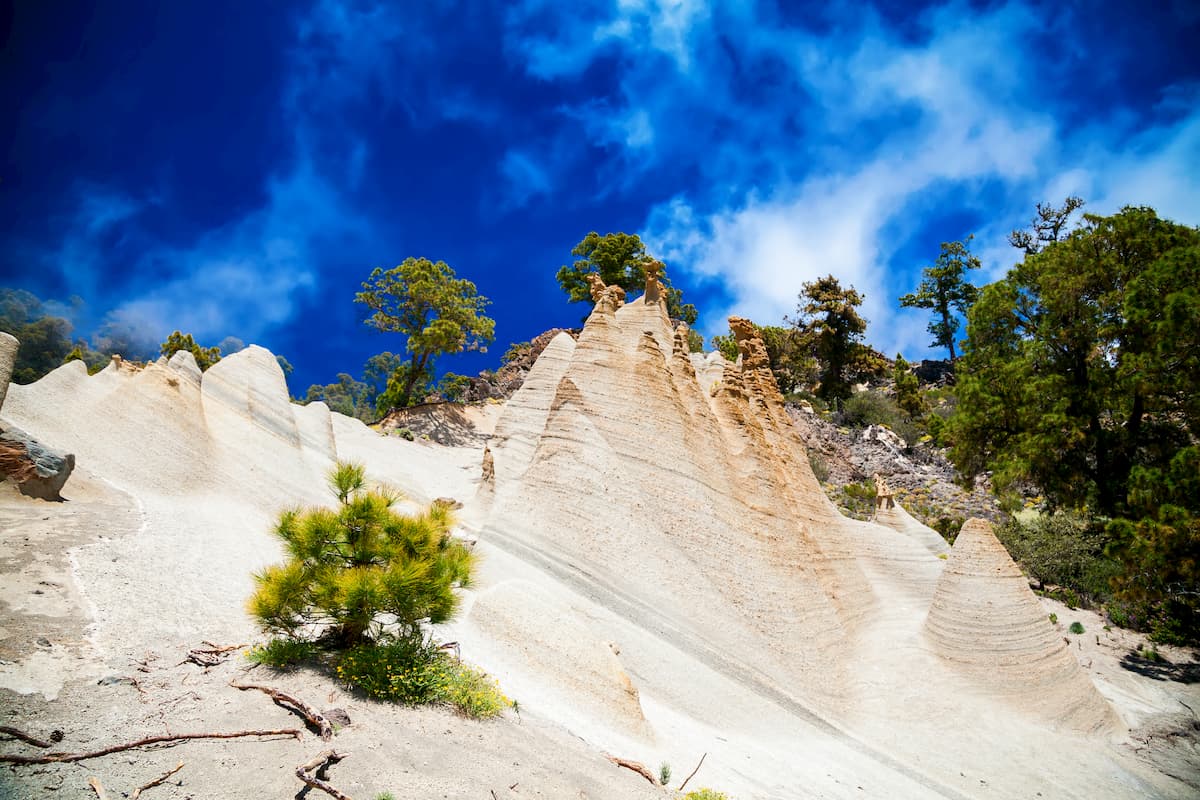
The only way to access this small corner hidden between pine-covered slopes is on foot along a path of medium-high difficulty. Make a 13-kilometre-long round trip which starts from the mountain town of Vilaflor. The trail ascends through natural Canarian pine forests and over cobbled paths. On clear days, at the top, you can see the southern edge of Las Canadas del Teide, and below, the southern slope of Tenerife sliding towards the Atlantic Ocean on which the mountains of the neighbouring island of Gran Canaria seem to float. When you arrive at this piece of Moon on Earth, please avoid touching or stepping on it since it is one of the most delicate places in Tenerife and thus you will contribute to keeping the beauty of this special place remaining intact.
Trails around Moonscape: One of the advantages of knowing this extra-terrestrial landscape on Earth is that you neither need the exhaustive training of the astronauts nor need to put on their uncomfortable and heavy space suits. It is advisable that you wear comfortable shoes and clothing for walking (preferably suited for the mountains) and that your backpack is packed with several litres of water, sun protection, some food and a bag to put all the waste that you generate.
The best known trails begin from the historic centre of Granadilla de Abona (trail PR-TF 83, a linear ascending route of 10.5 km in length), at the Parador de las Cañadas del Teide (first trail GR 131.1, then section of the GR 131 Degollada de Guajara-Vilaflor trail and PR-TF 72 trail, 14.8 km linear route) or from Vilaflor (PR-TF 72 trail, 12.9 km long circular route.)

Of the three, the most popular and simplest is PR-TF 72 trail, since the route begins and ends at the same point: a small charming town of Vilaflor de Chasna. In its historic centre, the Soler Family's House, the church of San Pedro Apóstol and the Sanctuary of Santo Hermano Pedro stand out. You will find the beginning of the route very close to these if you take El Canario street and then turn right.
Shortly after starting, you will discover Casa Galindo, one of the few buildings that are on the road and farther, after crossing the Madre del Agua track, you will pass the ruins of the Casa Marrubial, a place where goatherds lived until the beginning of the twentieth century.
Much of the trail has an important historical character as it runs along the Camino Real de Chasna, an ancient road that since pre-Hispanic times connects the north and the south of the island. This road was used by shepherds who guided their goats in search of pasture, muleteers who transported goods on their donkeys or oxen, European naturalists who studied the peculiarities of the Canary Island pine, pinocheros who collected the pinocha (pine needles) that they later used as compost for their crops, or beds that with the materials of the environment built water pipes that can be seen on the road.

Do you want to lose yourself in the infinity of trails that run through the Crown Forest? Does your body ask for more adrenaline? Do you prefer a paragliding flight? You may want to take a mountain bike route enjoying the breath-taking scenery while getting in shape. Climbing, horseback riding, caving, camping, you name it. You will find here everything and a bit more.
And if you need something different, just jump into the longest zip line in the Canary Islands, in the Forest Park.

If you’re looking for something more relaxed, there are also different recreational areas, such as the Madre del Agua camp in the Granadilla de Abona district, the Arenas Negras camp, the Contador camp in the highlands of Arico, and the Emilio Fernández Muñoz in Los Realejos where you can prepare a meal outdoors, walk or simply lie under a tree and quietly enjoy the sounds of nature.
Don't forget to bring a mobile phone in case of any unforeseen event, sunscreen and a cap, and also a jacket or coat and a raincoat since the weather can be very changeable especially when you are gaining some altitude. Also, don’t forget to bring water, something to eat to replenish the lost energy and adequate footwear. Of course, please always respect your surroundings and clean after yourself.
Bus:
Car:
What to eat
Where to stay
Explore Corona Forestal Natural Park with the PeakVisor 3D Map and identify its summits.








